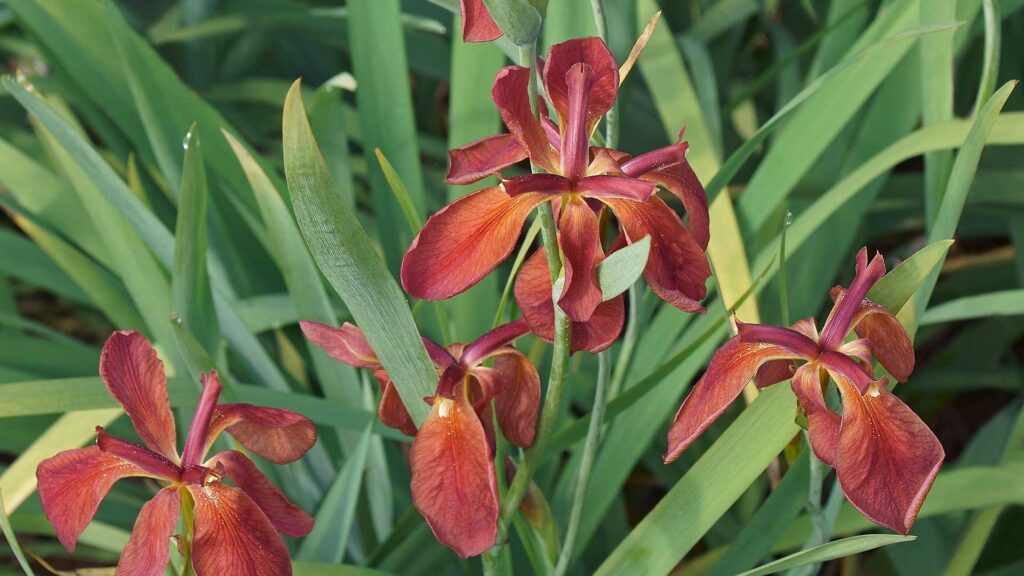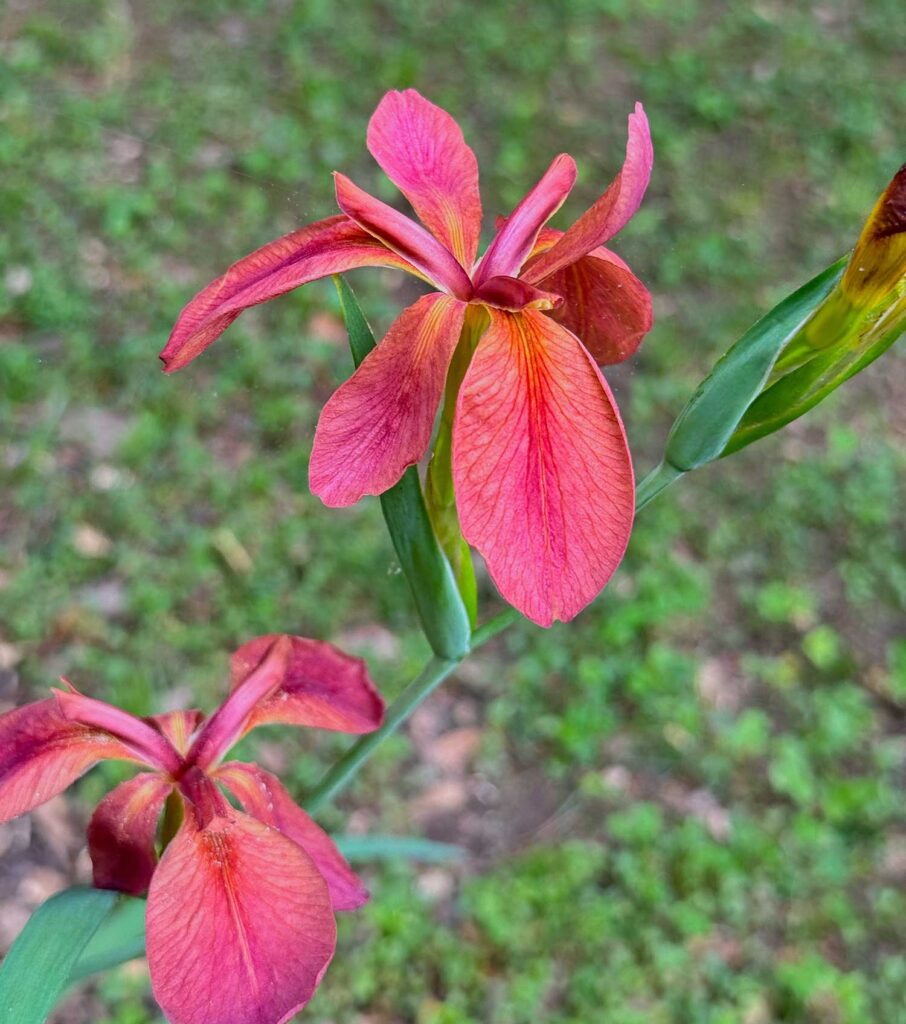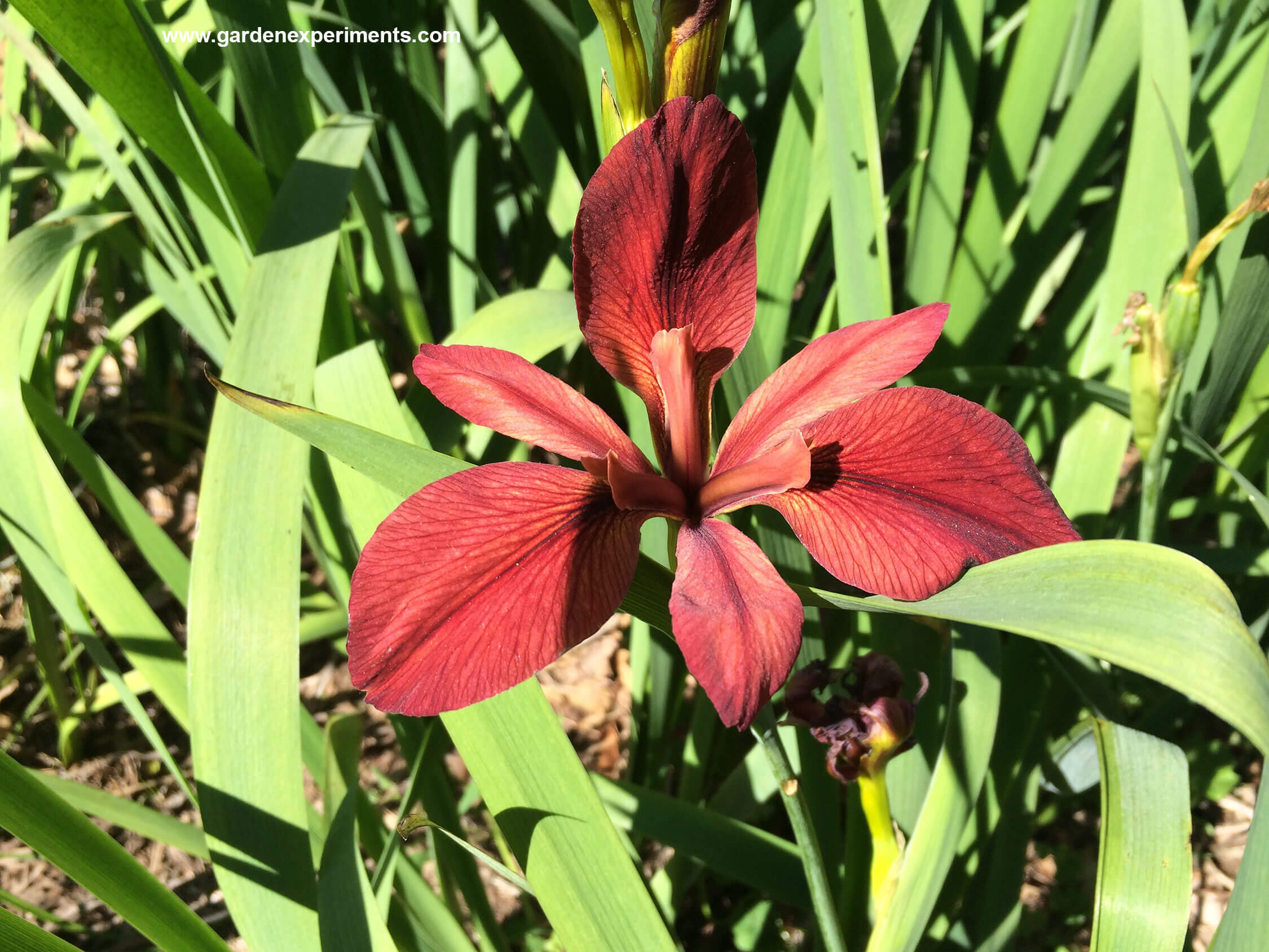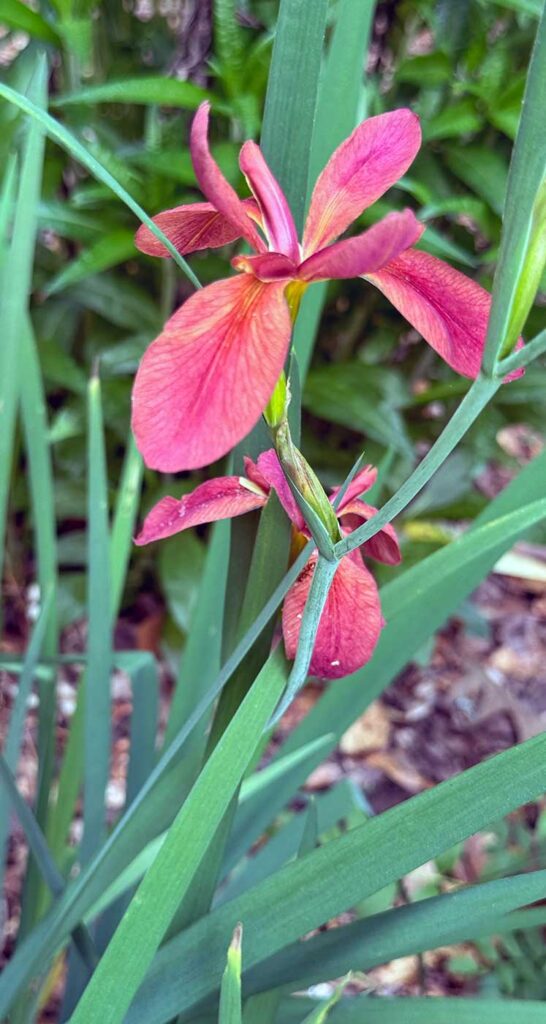Large, copper or brick-red colored flowers adorn the flower spikes of the copper iris (Iris fulva). Native to wetland areas, this unique plant thrives in wetter soils, making it an excellent addition to gardens with moist conditions.
We planted this iris in our backyard in a spot with wet, clay soils. It has flourished, spreading and producing numerous blooms this year. Companion plants in this moist soil garden include Texas star hibiscus, milkweeds, cardinal flower, some ferns, and a few other native plants.
The copper iris is a Louisiana iris, so it has a distinctive flat-topped flower, that adds a unique visual appeal to any landscape. Not only does it enhance your garden’s aesthetic, but it also provides valuable resources for local wildlife, attracting hummingbirds, butterflies, and bees. It is also the host plant for several moths.

Copper Iris Appearance
Being in the Louisiana irises category, the copper iris has a distinct, flat-topped flower with six petals that droop from the center of the bloom. The flowers are rust-colored or brownish-red. Each stem can produce 4 to 5 flowers. Copper iris leaves are long and narrow or blade-like and bright green. The seed pods of Iris fulva are hexagonal. Its seeds are coated in a dry, spongy material that allows it to float.
How to Grow Copper Iris

Copper iris is the perfect plant for moist soil areas in your garden. It is low maintenance, heat tolerant, and deer resistant. The flowers are a welcome pop of color in early spring to summer.
Plant it along your pond edge, in clay soil that stays moist, or in the low spots in your garden where water ponds. If you have a stream in your yard, that would be the perfect spot for copper irises.
Light & Water Requirements
This is a moist-soil plant. It has medium to high water requirements, so make sure to plant it where the soil stays moist most of the time. You can even grow it in a few inches of standing water. It will not tolerate dry soil for long, so if you experience drought, be sure to water it.
Copper iris can grow in partial shade to full sun, but they produce the most flowers in full sun.

Growing Conditions for Iris fulva
Copper iris is native to Texas, Louisiana, Arkansas, Missouri, Illinois, Ohio, Kentucky, Tennessee, Mississippi, Alabama, Georgia, and Florida. It can be found in swamps, moist-soil areas, wetlands, along stream or pond edges, along ditches, and in wet woods.
This plant is hardy in USDA Zones 5 to 9. It grows between 2 to 3 feet tall and spreads through rhizomes in the ground. Each 3 or 4 years, you must divide the roots to ensure you get lots of flowers. As the plants crowd each other, they will flower less and less.
How to Propagate Copper Iris

The easiest and most successful way to propagate copper iris is by dividing the roots. As this plant spreads and needs to be thinned every few years anyway, it’s a great way to create more plants for your garden or to share with your neighbors. Divide the plants in the late summer when the plants are dormant.
While you can also grow copper iris from seeds, the seeds are very slow to germinate and have an average 50% germination rate.
Wildlife Value of Copper Iris
The rust-colored iris flowers attract ruby-throated hummingbirds, bees, and butterflies. This plant is also the host plant for the caterpillars of several moths: the Virginia stenucha moth, the Agreeable tiger moth, and the Dull-barred endothemia moth.
While deer will sometimes munch on the very tips of the new leaves, most of this plant is poisonous and is generally left alone by animals.
